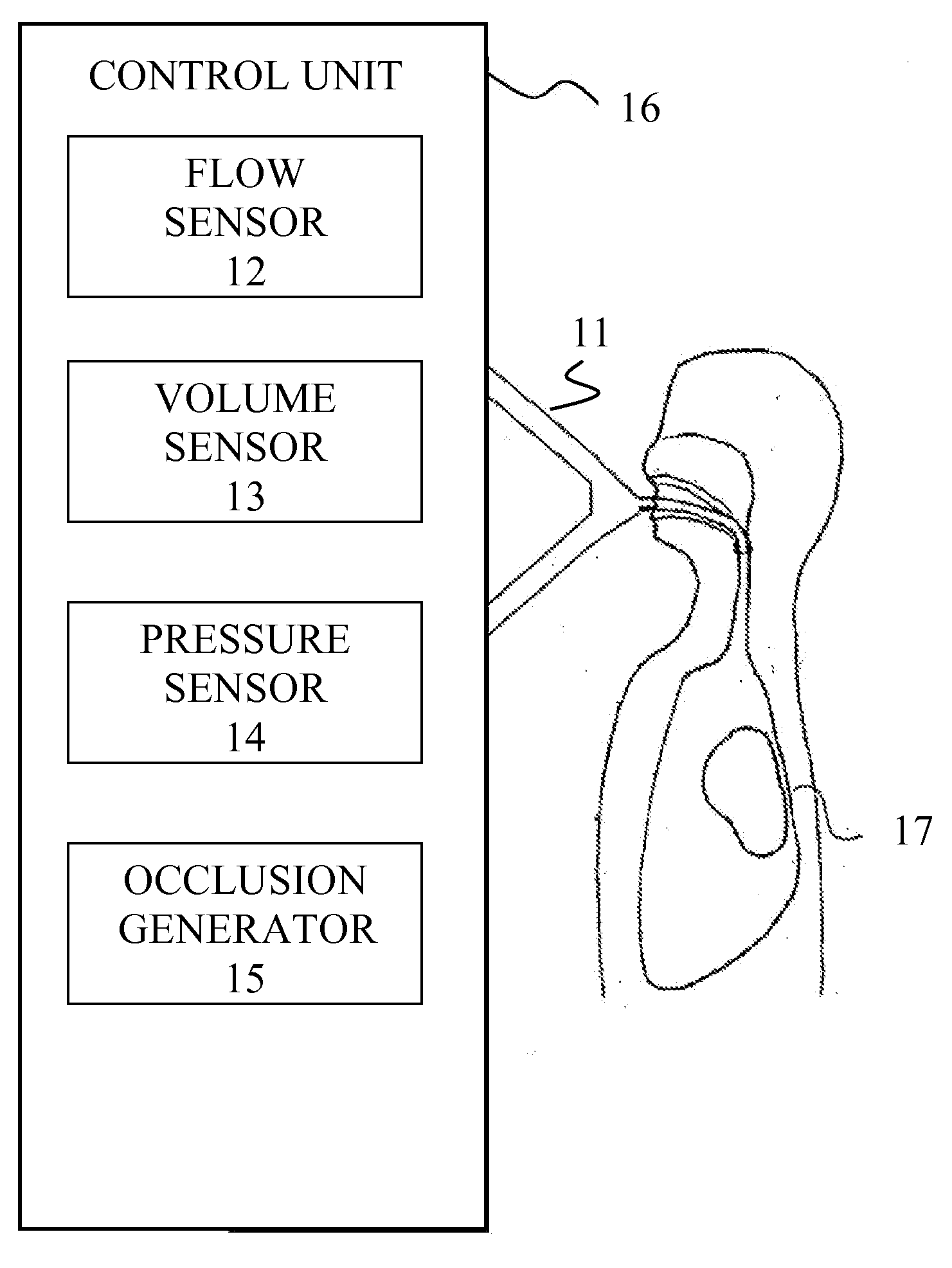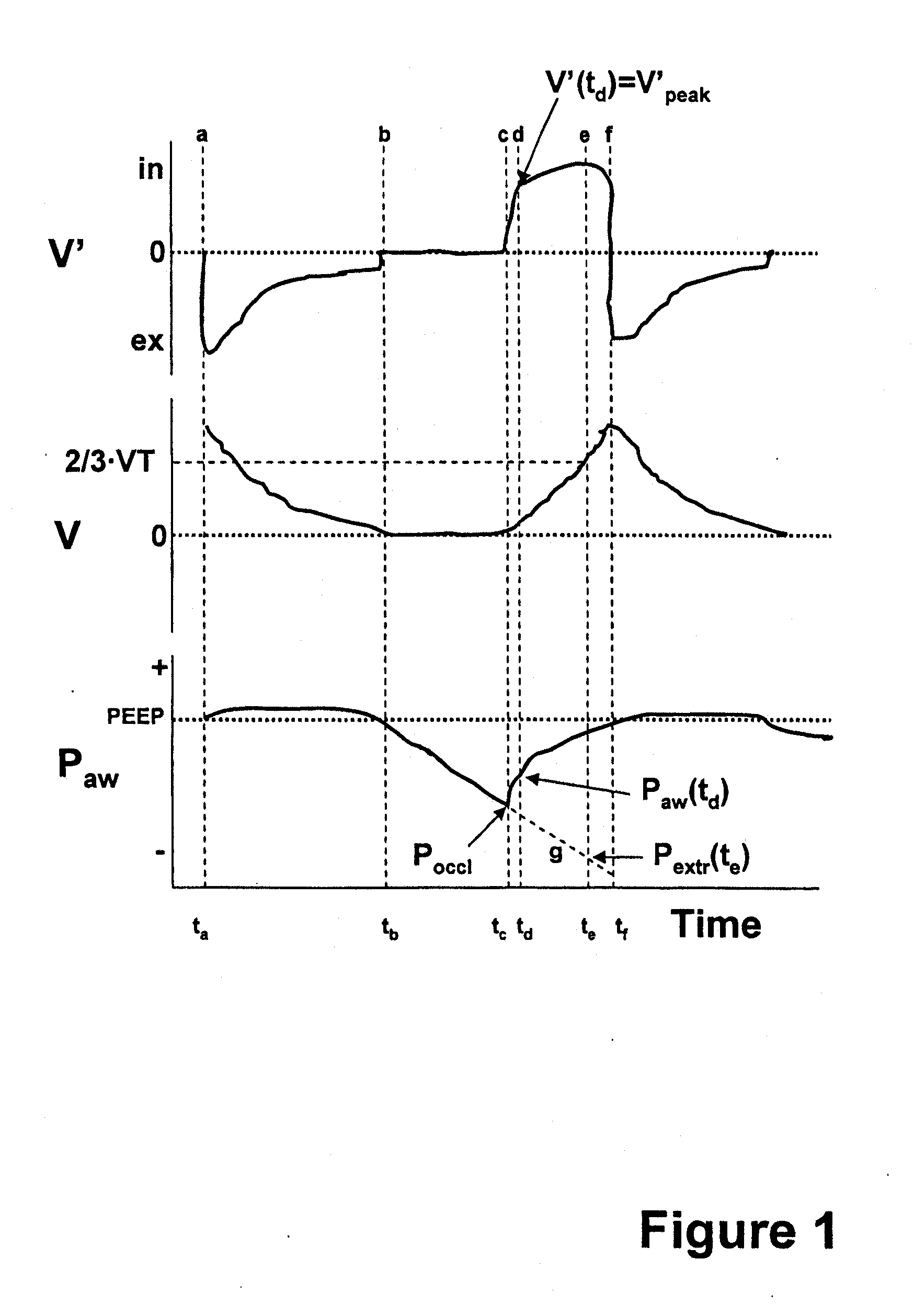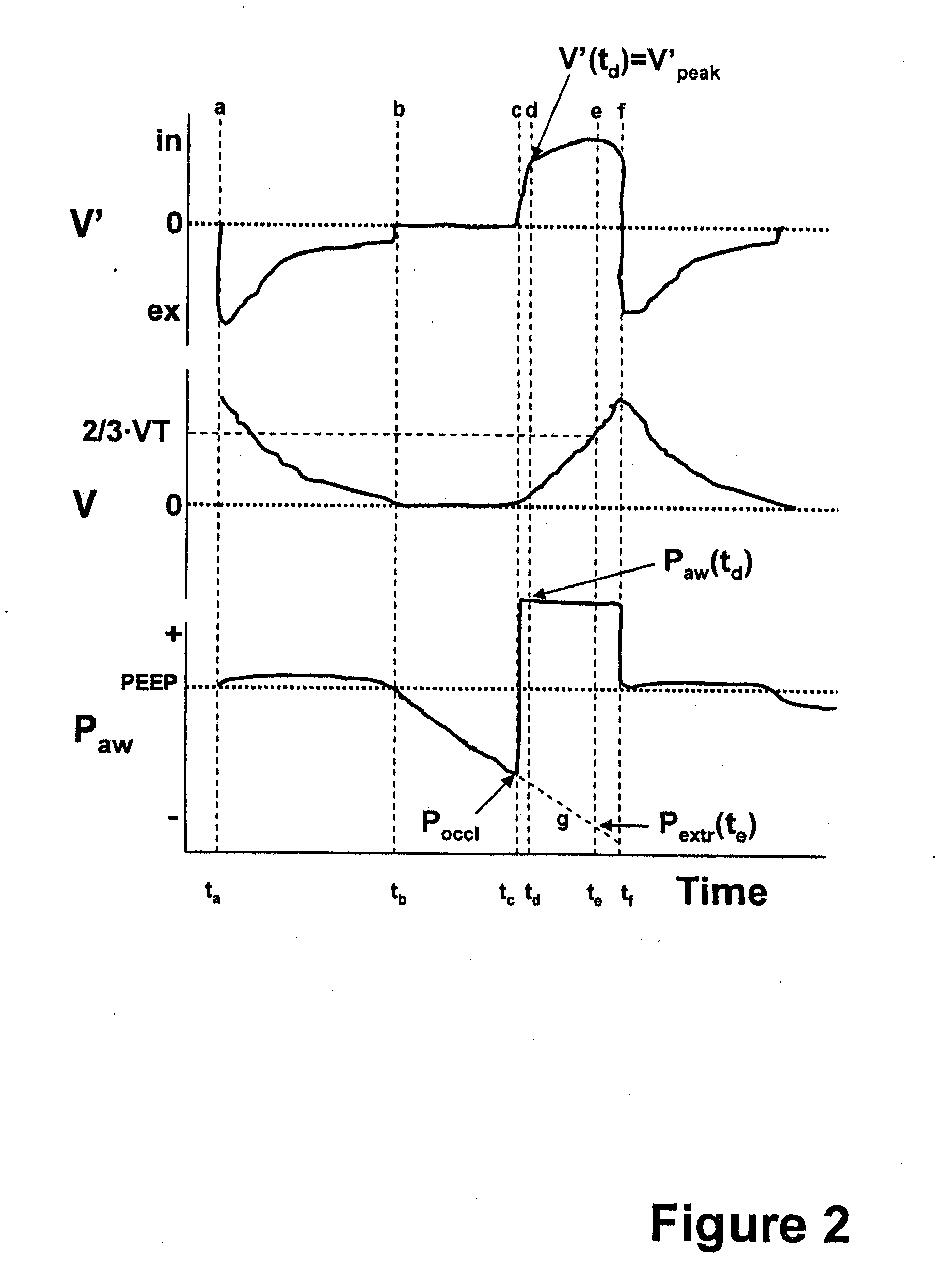Method for determining the resistance of the respiratory system of a patient
a technology for the respiratory system and the resistance of the patient, which is applied in the field of determining the resistance of the respiratory system of the patient, can solve the problems of a lot of assumptions and simplifications, methods that involve a lot of assumptions and errors, and errors related to the extrapolation of the psub>mus /sub>trajectory are potentially the most serious
- Summary
- Abstract
- Description
- Claims
- Application Information
AI Technical Summary
Benefits of technology
Problems solved by technology
Method used
Image
Examples
Embodiment Construction
[0022]Referring to the drawings in particular, FIG. 1 shows a graph showing the time dependence of the airway pressure Paw, inspiratory volume V and flow V′. By the dashed vertical lines, the following times are indicated: ta=beginning of expiration, tb=start of airway occlusion at the beginning of inspiration, tc=release of airway occlusion, td=transition time, te=time when a predetermined part of the tidal volume has been reached (e.g., ⅔ VT), tf=end of inspiration. g indicates the linear extrapolation of Paw(t) during the occlusion period to the entire tidal volume. P−mus(te)=−Pextr(te) is the estimated pressure generated by the inspiratory muscles to generate a flow and volume at te. The designation in and ex on the vertical axis of V′ indicate the inspiratory and expiratory flow portions.
[0023]After the end of the occlusion at tc, the time dependence of the flow is analyzed to define the transition point where the first linear rise of high slope is transitioning to a further po...
PUM
 Login to View More
Login to View More Abstract
Description
Claims
Application Information
 Login to View More
Login to View More - R&D
- Intellectual Property
- Life Sciences
- Materials
- Tech Scout
- Unparalleled Data Quality
- Higher Quality Content
- 60% Fewer Hallucinations
Browse by: Latest US Patents, China's latest patents, Technical Efficacy Thesaurus, Application Domain, Technology Topic, Popular Technical Reports.
© 2025 PatSnap. All rights reserved.Legal|Privacy policy|Modern Slavery Act Transparency Statement|Sitemap|About US| Contact US: help@patsnap.com



